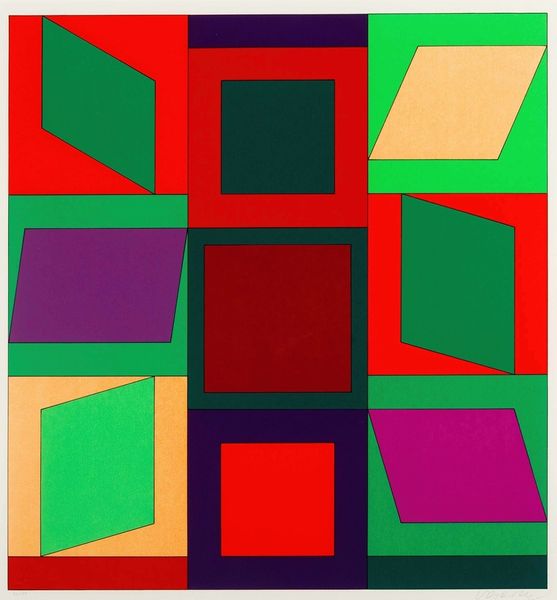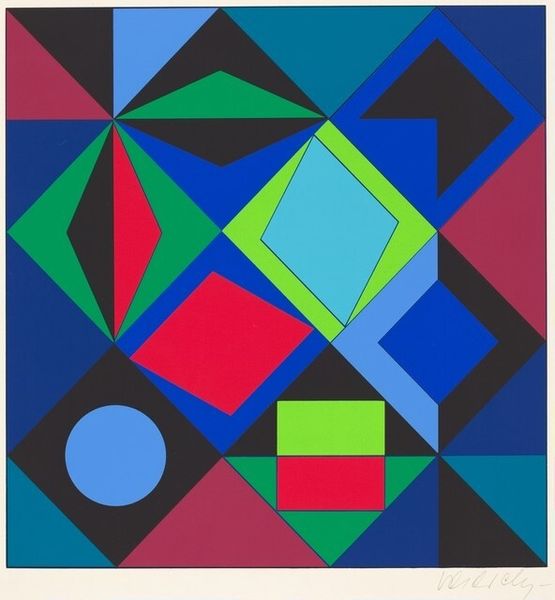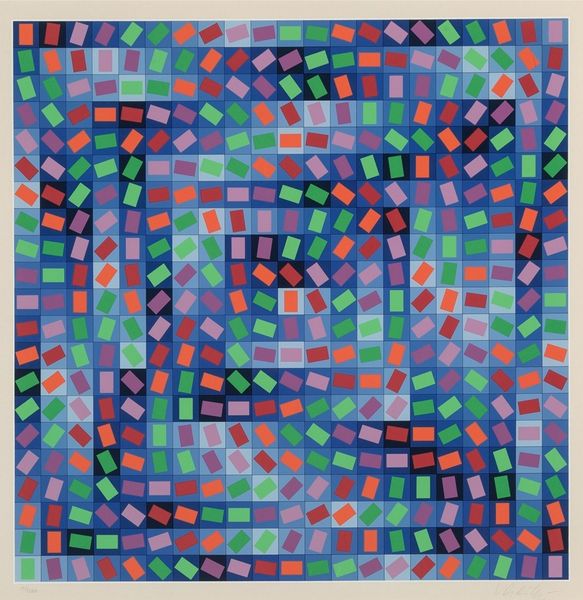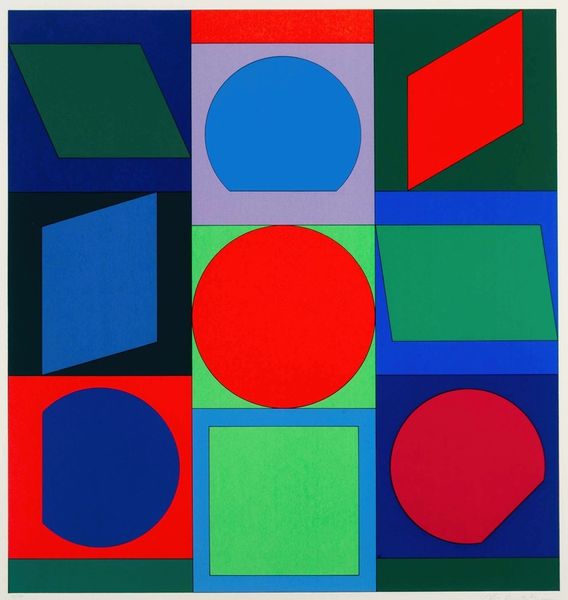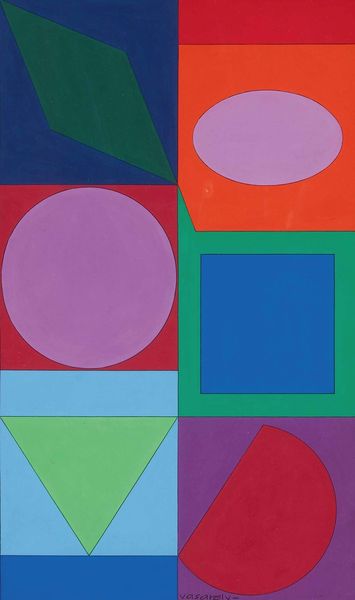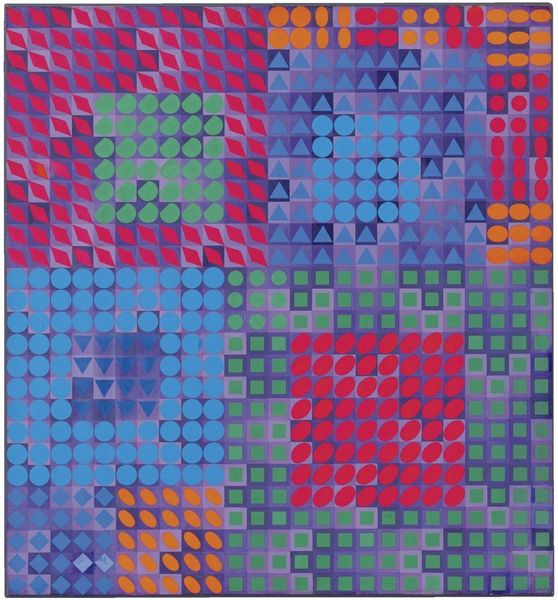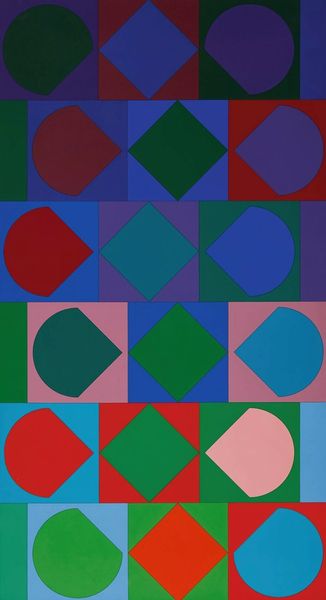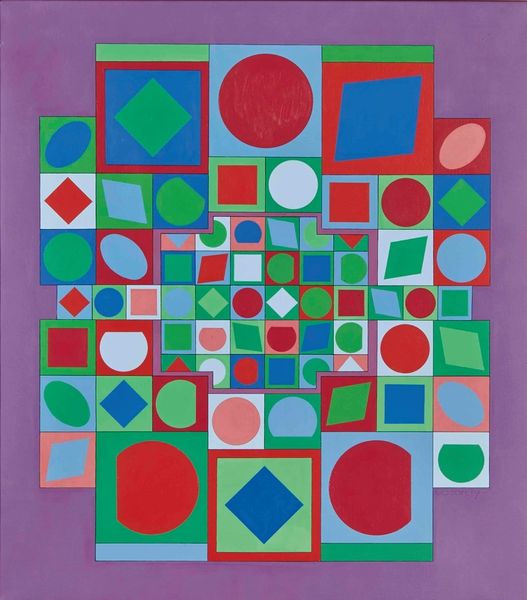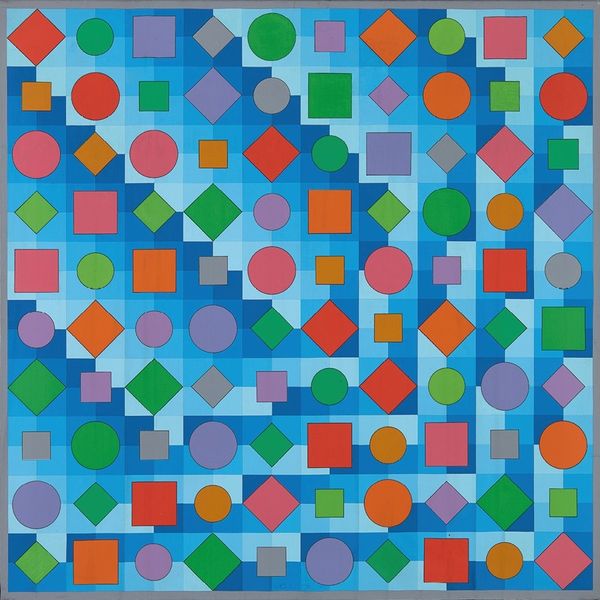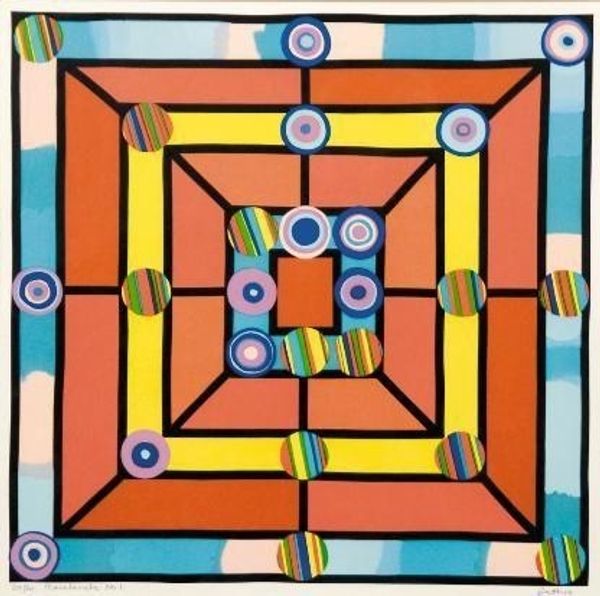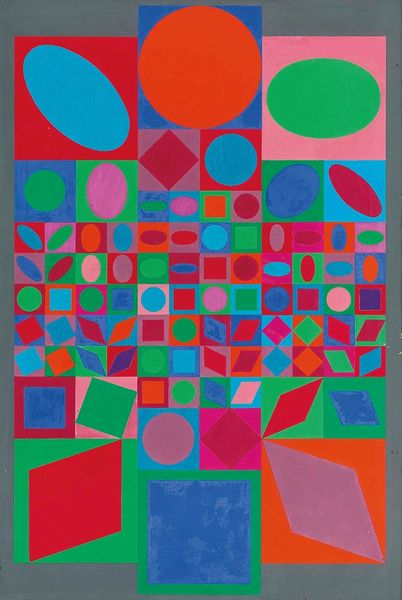
Copyright: Victor Vasarely,Fair Use
Editor: This is Victor Vasarely's "Folklore" from 1963, painted with acrylic. All those geometric shapes give it a very playful feel, yet somehow there's a rigid structure underlying it. What catches your eye in this piece? Curator: The arrangement speaks to me of cultural memory. Vasarely seems to be reaching for something primal in our understanding of form. Do you notice how these simple shapes, circle, square, triangle, become something almost like hieroglyphs? They evoke an archaic language. Editor: A language? I mostly see abstraction... but the title *is* Folklore. So what is the message? Curator: Precisely. The title points to a collective, shared visual vocabulary. Think of it: throughout different cultures and times, have these shapes consistently symbolized something, held a shared meaning? Circles suggesting cycles, squares suggesting stability, and so on. Editor: I never thought of it that way before. Almost like these shapes are visual archetypes? Curator: Indeed. It almost hints to how the mind works. What’s so evocative about Vasarely is how he uses these simple elements to activate our understanding of space, drawing on our inherited visual intelligence. Can you perceive a continuous narrative or shared mythic element between civilisations due to common shapes? Editor: It's like he's tapping into a universal visual language. I see the interconnectedness that geometrical figures produce for the overall abstraction and how our minds complete familiar, common shapes into a new narrative. Thanks, that definitely shifts how I see abstract art now.
Comments
No comments
Be the first to comment and join the conversation on the ultimate creative platform.
